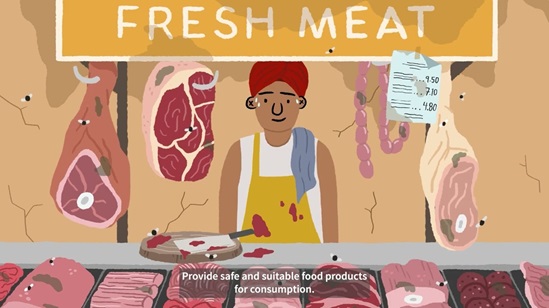Mitigating risks in traditional food markets
Traditional food markets play an important economic, cultural and social role and are sources of livelihood for millions of people in urban and rural areas. In the Asia Pacific region, traditional food markets play a very strategic role for food security. When not managed properly, traditional food markets can be unsafe environments that pose health risks related with food safety and zoonoses threats. Under these conditions, Traditional food markets can thus pose significant threats to the health of food handlers, vendors, consumers, and the community.
WHO aims to improve good hygiene practices and sanitation in traditional food markets to reduce the risk of disease transmission from food, animals, and person to person. The management of these public health risks associated with traditional food markets are developed under a One Health approach, considering that the health of people is closely linked and inter-dependent on the health of animals and plants and the wider environment. The World Health Organization Guide to Healthy Food Markets provides guidance towards making traditional markets safer.
The five keys for safer markets comprise five basic measures to mitigate the risks in traditional food markets:
- Key 1 - Keep clean.
- Key 2 - Avoid contamination.
- Key 3 - Keep food products safe.
- Key 4 - Reduce contact with animals.
- Key 5 - Stay safe, protect yourself.













